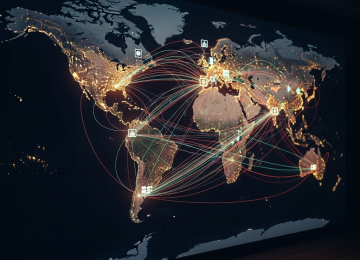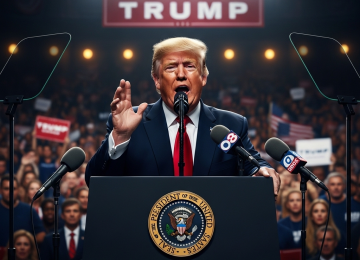The Judge’s War: 5 Key Points on the Judicial Standoff
In the halls of justice and the corridors of power, an ideological conflict is reaching a boiling point. Pundits, politicians, and legal scholars have termed it the judge’s war, a multifaceted struggle between different judicial philosophies that threatens to reshape the American legal landscape for generations. This is not a war fought with armies, but with gavels, legal briefs, and circuit court appointments. The core of this conflict lies in the deep divisions over constitutional interpretation, the role of the judiciary, and the perceived politicization of the courts, from the local level all the way to the Supreme Court.

Understanding the Genesis of the Judge’s War
The term “judge’s war” may sound dramatic, but it accurately captures the intensity of the current judicial climate. This conflict did not emerge overnight. Its roots can be traced back decades, fueled by contentious Supreme Court confirmation battles and the increasing tendency for political issues to be resolved through litigation rather than legislation. What began as academic debates over judicial philosophies like originalism versus a living constitution has now spilled into the public arena, creating two distinct and often adversarial camps within the judiciary itself.
One camp advocates for judicial restraint, arguing that judges should interpret the law as written and defer to the legislative branches. The other camp believes in a more active judiciary, one that can and should address societal wrongs and protect minority rights, even if it means striking down laws passed by elected officials. This fundamental disagreement has created a deep chasm, turning judicial appointments into high-stakes political battles. The fight is over the very soul of the legal system: is it a neutral arbiter of disputes or an engine for social and political change? This long-simmering tension has now erupted, with each judicial appointment and landmark ruling becoming a new front in this ongoing war.
Key Players and Competing Philosophies
At the heart of the judge’s war are the judges themselves, along with the political figures who appoint them and the advocacy groups who champion them. The conflict is not merely partisan, though it often aligns with party platforms. It is a battle of deeply held legal beliefs. The primary competing philosophies include:
- Originalism/Textualism: Proponents argue that the Constitution should be interpreted based on the original understanding of its text at the time it was adopted. They believe a judge’s role is to apply the law, not to create it. This philosophy is often associated with judicial conservatism.
- Living Constitutionalism: Advocates for this view believe the Constitution is a dynamic document whose meaning should evolve to meet the needs of contemporary society. They argue that judges must consider modern values and social progress when interpreting its broad principles.
- Judicial Minimalism: This approach favors narrow, case-specific rulings that avoid setting broad precedents. Minimalist judges aim to decide only what is necessary to resolve a particular dispute, leaving larger constitutional questions for another day.
Influential figures from the Federalist Society and the American Constitution Society have become key strategists in this conflict, grooming potential judicial nominees and shaping legal discourse. Their efforts have ensured that when a judicial vacancy opens, there is a “bench” of ideologically vetted candidates ready to be deployed, further entrenching the battle lines in the judge’s war.

The 5 Major Flashpoints in the Conflict
The theoretical disagreements manifest in very real and contentious legal battles. These flashpoints are where the judge’s war is most visible to the public. Here are five of the most significant areas of conflict:
- Circuit Court Appointments: The “shadow war” for control of the U.S. Courts of Appeals is critical. These courts are the final arbiter for the vast majority of federal cases. Political parties now prioritize filling these seats with ideologically aligned judges, understanding that controlling a circuit court can shape law within a region for decades.
- The “Shadow Docket”: This refers to the Supreme Court’s use of emergency orders and summary decisions made without full briefing or oral argument. Critics argue it’s being used to make significant policy changes without transparency, while supporters claim it’s a necessary tool for managing urgent legal matters.
- Jurisdictional Stripping and Standing: A key tactic in the judge’s war involves arguments over who has the right (standing) to bring a lawsuit and which court has the authority (jurisdiction) to hear it. By narrowing the definitions of standing and jurisdiction, courts can effectively block challenges to controversial laws, a battle often covered in depth by major news outlets like The Associated Press.
- Administrative Law and Agency Deference: A major front involves the power of federal agencies. One side seeks to curtail the power of the “administrative state” by rolling back the long-standing practice of courts deferring to an agency’s interpretation of a statute. The other side argues this deference is essential for effective governance in a complex world.
- Court Reform Proposals: The intensity of the conflict has led to calls for fundamental changes to the courts. Proposals like imposing term limits on Supreme Court justices, expanding the number of justices (“court packing”), or creating ethics codes for the Supreme Court are no longer fringe ideas but central topics of debate, representing a direct response to the perceived politicization of the judiciary.
Implications for the Future of the Judiciary
The outcome of the judge’s war will have profound and lasting consequences. The most immediate impact is the erosion of public trust in the judiciary as a neutral and independent branch of government. When courts are seen as extensions of the political process, their rulings lose legitimacy in the eyes of the public. This can lead to decreased compliance with court orders and a general breakdown in the rule of law.
Furthermore, the entrenched ideological divide could lead to a highly fractured legal system, where the rights of a citizen depend heavily on the geographic circuit in which they reside. A “patchwork” of conflicting legal precedents could create uncertainty for businesses and individuals alike. Ultimately, this war is a struggle over the balance of power. It will determine whether the judiciary remains a check on the other branches of government or becomes a tool for enacting a political agenda that cannot be achieved through the legislative process. The stakes could not be higher for the future of American democracy and the stability of its legal foundations.
















